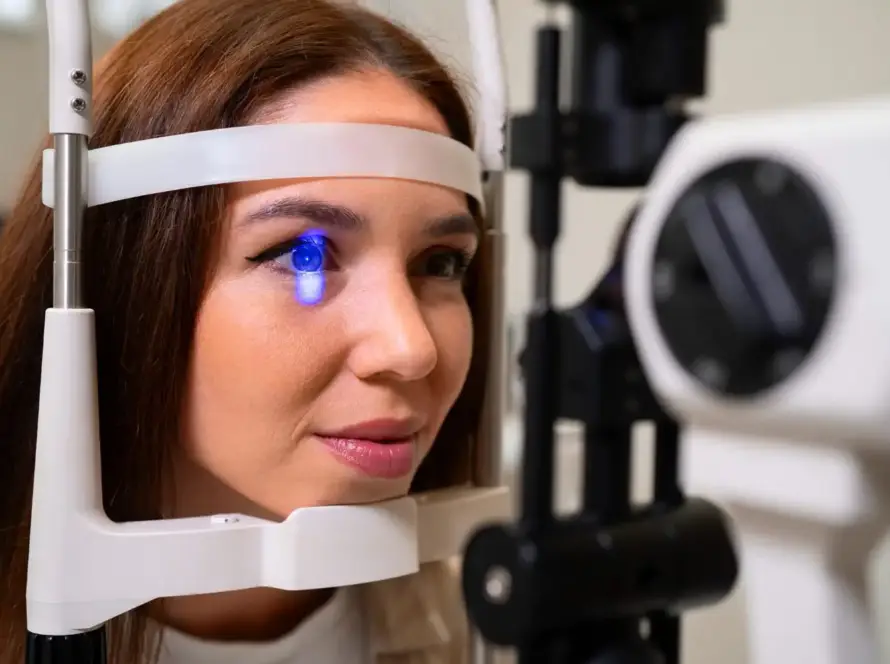In vision correction, LASIK (Laser-Assisted in Situ Keratomileusis) and PRK (Photorefractive Keratectomy) stand as two of the most prominent and widely practiced surgical procedures. Both aim to correct refractive errors such as myopia, hyperopia, and astigmatism, allowing patients to see clearly without the aid of glasses or contact lenses. Despite their common goal, these procedures differ significantly in terms of technique, recovery time, and patient suitability. Understanding these differences is crucial for anyone considering refractive surgery to make an informed decision.
PRK, the precursor to LASIK, has been in use since the 1980s. It involves a straightforward yet effective technique for reshaping the cornea:

- Procedure: In PRK, the outermost layer of the cornea, known as the epithelium, is carefully removed. An excimer laser is then used to reshape the underlying corneal tissue, correcting the refractive error. The epithelium naturally regenerates over several days post-surgery.
- Recovery: The recovery period for PRK is relatively longer compared to LASIK. Patients typically experience a few days to a week of discomfort as the epithelium heals. Vision improvement is gradual, often taking a few weeks to stabilize fully.
- Suitability: PRK is particularly advantageous for patients with thin corneas, those who suffer from dry eyes, or individuals engaged in activities that pose a risk of eye trauma, such as contact sports.
LASIK, one of the most commonly performed refractive surgeries, offers a different approach:
- Procedure: LASIK involves creating a thin flap in the cornea using a femtosecond laser or a microkeratome. The underlying corneal tissue is then reshaped with an excimer laser, and the flap is repositioned. This flap acts as a natural bandage, promoting quicker healing.
- Recovery: Recovery from LASIK is notably rapid. Most patients report significant vision improvement within a day or two, accompanied by minimal discomfort.
- Suitability: LASIK is suitable for individuals with adequate corneal thickness and stable vision prescriptions. Its quick recovery time makes it appealing for those seeking immediate results.
Key Differences Between PRK and LASIK
Procedure Technique:
- PRK involves the removal of the corneal epithelium, while LASIK includes the creation of a corneal flap.
Recovery Time:
- PRK has a longer recovery period, with gradual vision improvement, whereas LASIK offers quicker recovery, often within a couple of days.
Post-Operative Discomfort:
- PRK patients experience more discomfort during the initial healing phase due to the removal of the epithelium. LASIK patients generally encounter minimal discomfort post-surgery.
Factors to Consider
Choosing between PRK and LASIK involves considering several factors:
- Corneal Thickness: LASIK requires sufficient corneal thickness for flap creation, making PRK a safer choice for those with thinner corneas.
- Lifestyle: For individuals involved in contact sports or high-risk activities, PRK may be the preferred option due to the absence of a corneal flap.
- Recovery Time: Patients needing rapid recovery may lean towards LASIK.
- Comfort Level: LASIK typically offers less post-operative discomfort, which could influence the decision for those concerned about pain.
Conclusion

Both PRK and LASIK have transformed the field of refractive surgery, providing millions with the gift of clear vision. The choice between the two depends on individual eye characteristics, lifestyle considerations, and personal preferences. Consulting with an experienced ophthalmologist is essential to determining the most suitable procedure based on one’s specific needs. Both PRK and LASIK are safe, effective, and life-changing, offering the promise of a world seen with newfound clarity.
Beyond LASIK, Beyond SMILE



